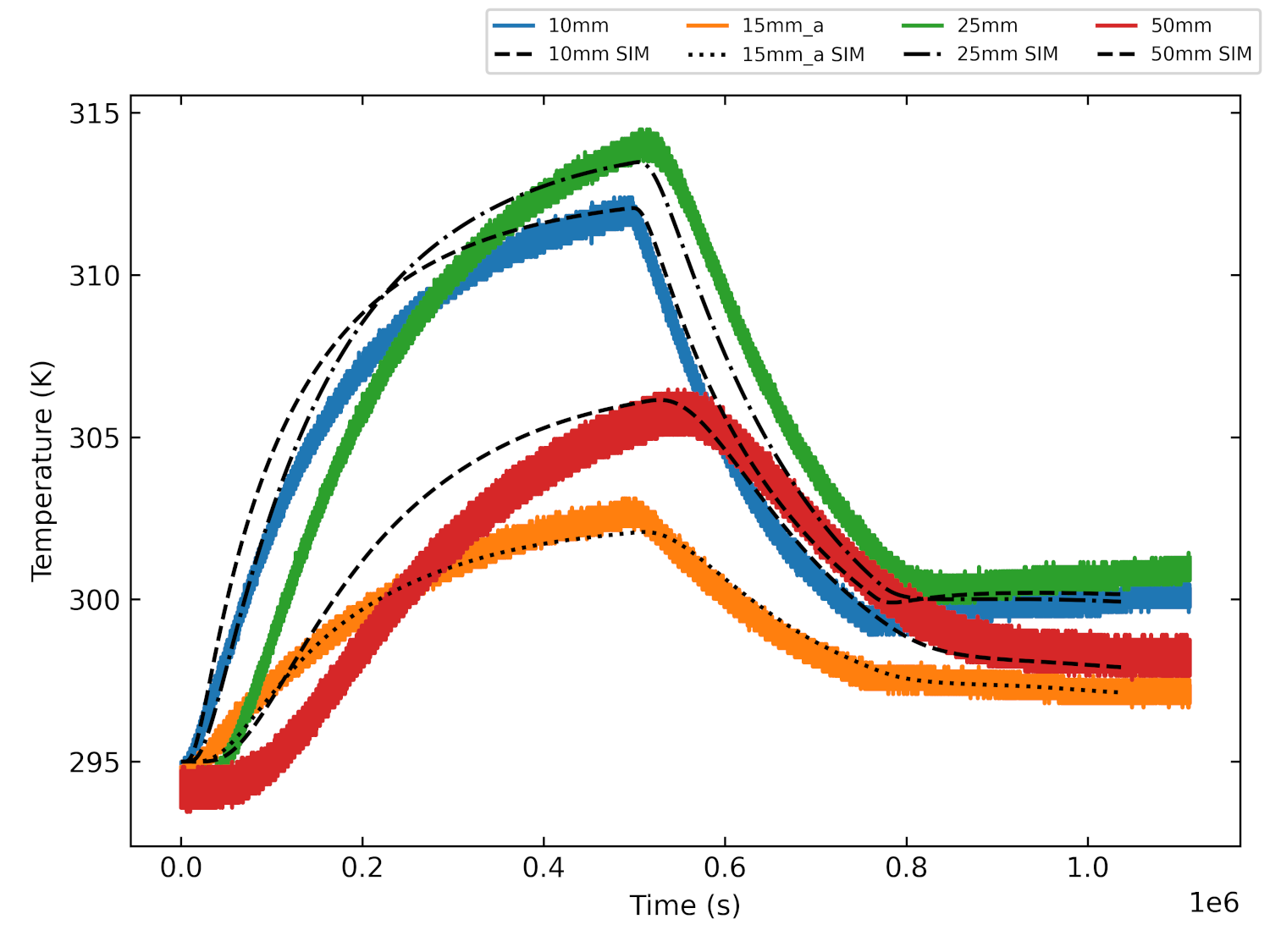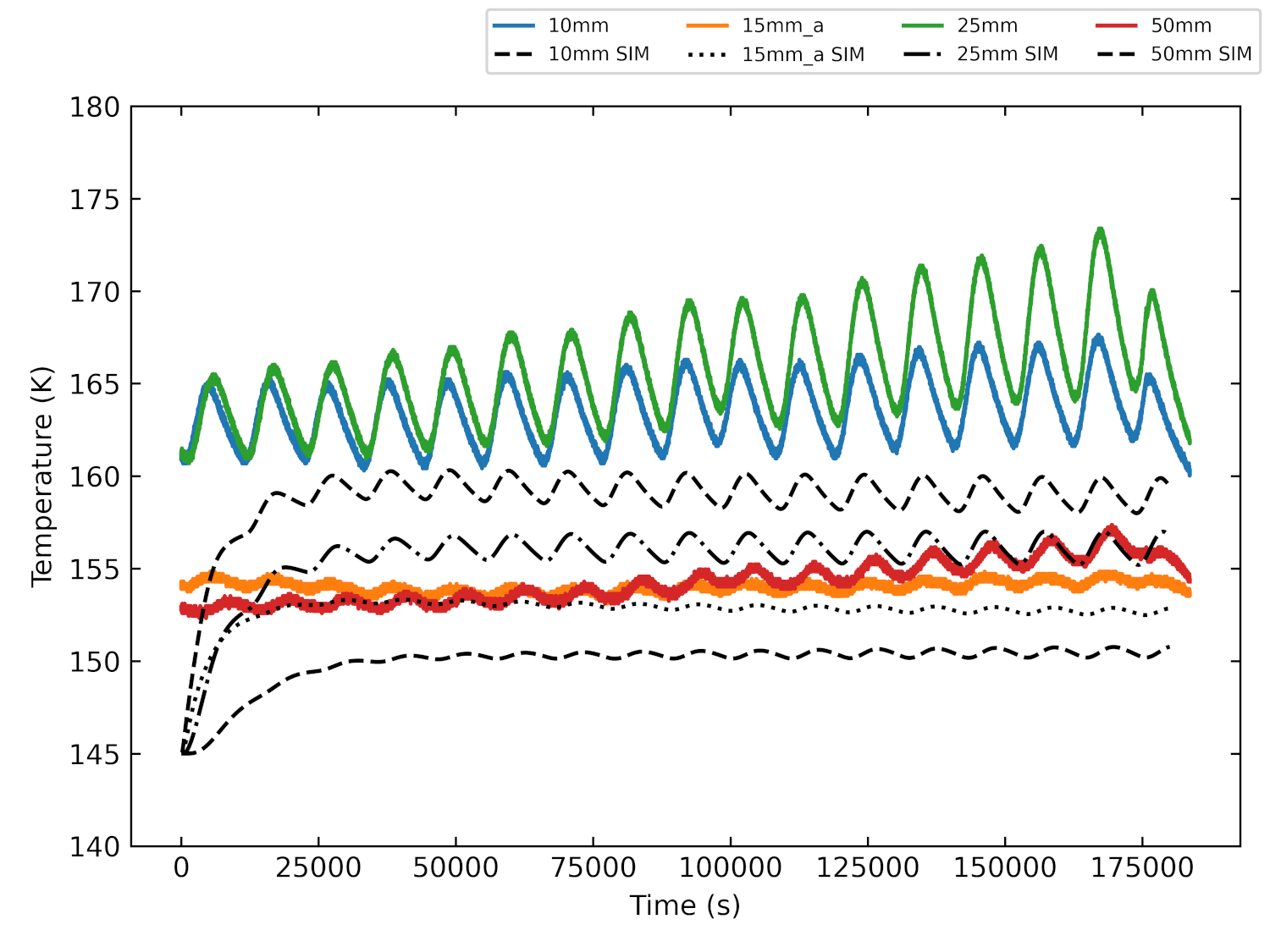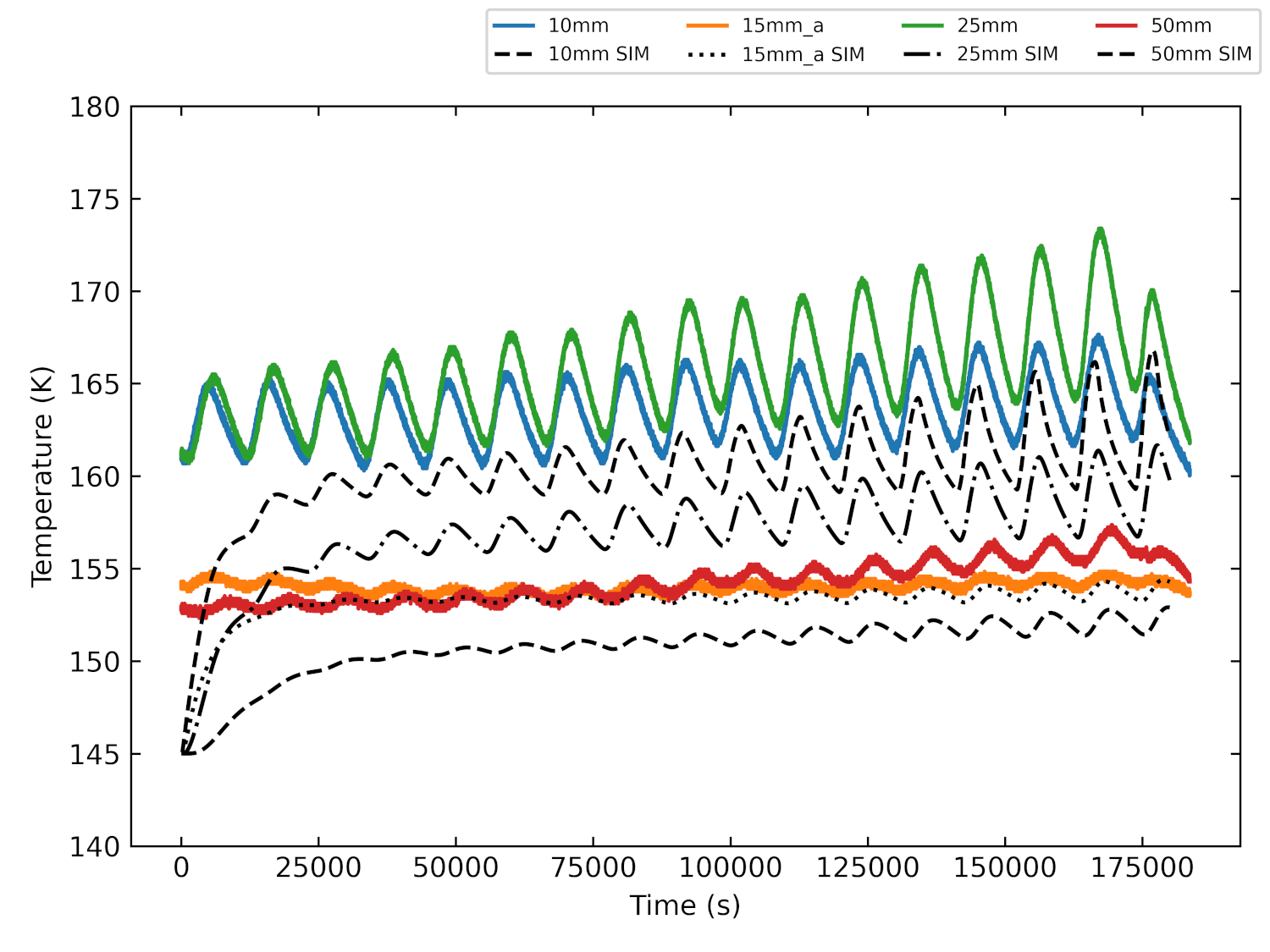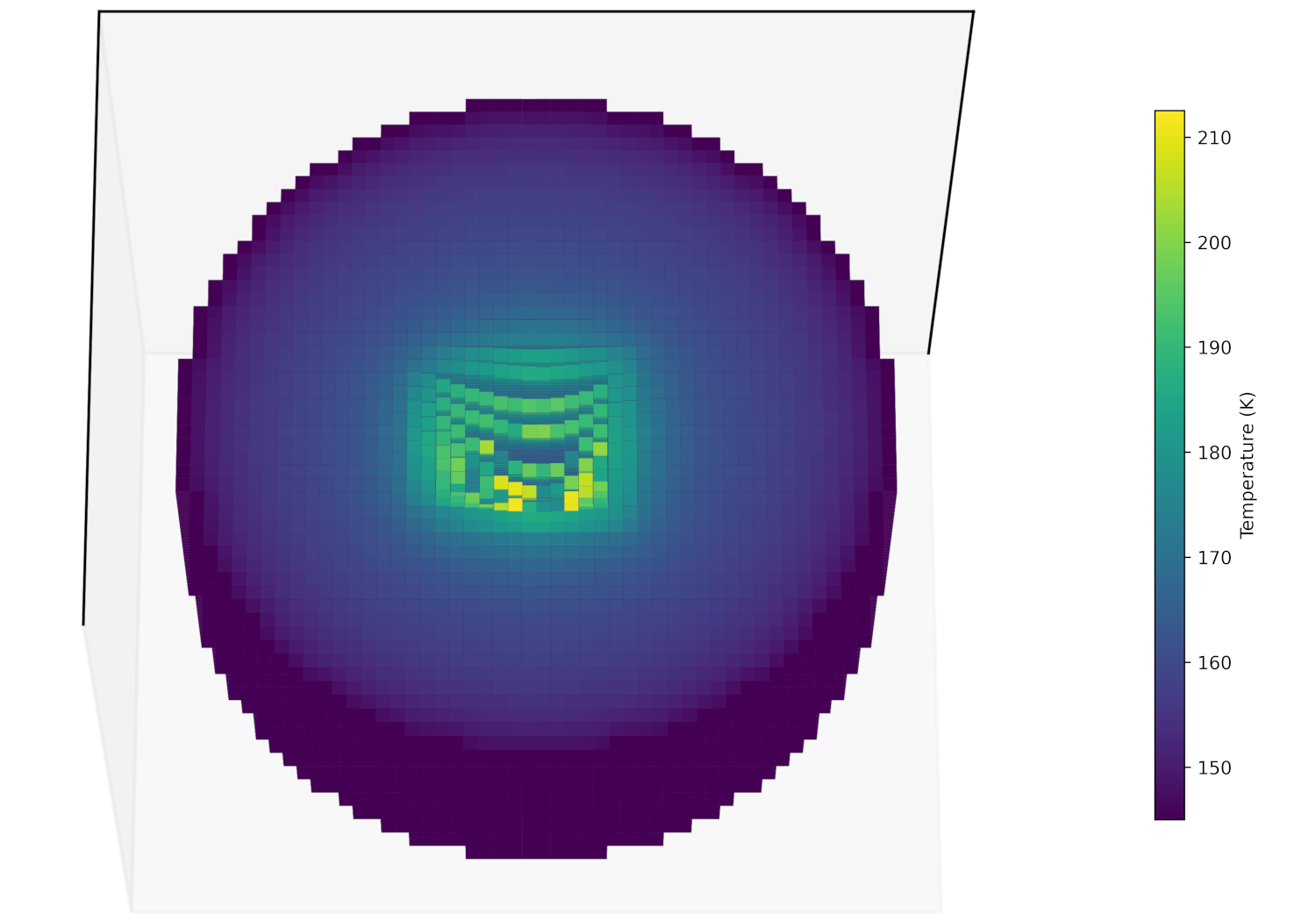3D heat transfer simulation of laboratory measurements of granular media
- 1Institute of Geophysics and extraterrestrial Physics, Technische Universität Braunschweig, Braunschweig, Germany (c.schuckart@tu-braunschweig.de)
- 2Institute for Planetology, University of Münster, Münster, Germany
For the thermal modelling of the activity and evolution of cometary nuclei, it is of utmost importance to understand the heat transfer in granular media. To help with the understanding of the underlying physical processes, laboratory cometary simulation experiments were conducted within the Comet Physics Laboratory (CoPhyLab) project [1]. A three-dimensional thermophysical model was developed to simulate selected CoPhyLab experiments and to better understand the underlying microphysics.
Samples of granular media were illuminated with a halogen lamp either continuously or in sinusoidal cycles and temperatures were measured with Pt1000 temperature sensors.
The thermophysical model is capable of solving the heat-transfer equation and the gas-diffusion equation via a finite-volume scheme. Furthermore, it includes effects that are important for the description of granular media, especially a thermal conductivity calculation that is dependent on both contact and radiative heat transfer [2], volumetric energy absorption [3] and sintering [4].

Figure 1: The temperature over time plots showing the best match between simulation (black curves) and selected temperature sensors (coloured curves). The laboratory sample was constantly illuminated in the first part of the experiment, after which it cooled down and finally got illuminated in sinusoidal cycles. The simulation parameters are a bolometric albedo of 0.7, a thermal conductivity of 0.008 W m-1 K-1 and a light-absorption length scale of 1 mm.
As a first test, the simulation results were compared to a pure sand sample as a simple representation of a non-active granular medium. The sample was continuously irradiated over multiple days, after which it was cooled down and finally irradiated again in a day-night-cycle pattern. With only the albedo, heat-conductivity and light-absorptionlength scale as free parameters, very good agreement between the laboratory measurements and the simulations to below 5 K difference could be achieved (Figure 1).


Figure 2: The temperature over time plots showing the best match between simulation (black curves) and selected temperature sensors (coloured curves). It can be seen that the simulation on the left doesn’t match the qualitative trend of the function, which is due to non-matching crater-wall temperatures. After artificially increasing the crater wall temperatures in the simulation on the right, a better match between simulation and the experimental data could be achieved.

Figure 3: The final temperature profile of the best fitting simulation of the ice samples in a 3D representation. The walls of the formed crater are colder than they were in the experiments.
Further experiments with pure granular water ice [5] were performed and simulated. The sample, which was irradiated with a day-night-cycle pattern, showed the formation of a steep crater over multiple days. The influence of the crater growth shows significant impact on the temperature profiles. Hence, these dynamic processes must be accurately described in order to match simulations to the laboratory experiments (Figures 2 and 3). It was found that possible sintering effects are seemingly negligible on the time scales and temperature regimes in which these experiments were conducted.
Lastly, a brief discussion on difficulties of modelling small-scale laboratory samples with thermophysical models shall be given, pertaining especially to the influence of the laboratory environment. It was shown that even small differences of the assumed background temperature could lead to variation in the simulation results by multiple Kelvins. Thus, special care has to be taken to account for these influences correctly.
In conclusion, laboratory experiments can provide much needed validation cases for thermophysical models and can be used to refine said models. In turn, these models can be used to help better understand and design laboratory experiments.
References:
[1] Kreuzig, C. et al. (2021). “The CoPhyLab comet-simulation chamber”. Review of Scientific Instruments 92.11, S. 115102.
[2] Gundlach, B. und Blum, J. (2012). „Outgassing of icy bodies in the Solar System - II: Heat transport in dry, porous surface dust layers“. Icarus 219.2, S. 618–629.
[3] Wurm, G. und Krauss, O. (2006). „Dust Eruptions by Photophoresis and Solid State Greenhouse Effects“. Physical Review Letters 96.13, S. 134301.
[4] Gundlach, B. et al. (2018). „Sintering and sublimation of micrometre-sized water-ice particles: the formation of surface crusts on icy Solar System bodies“. Monthly Notices of the Royal Astronomical Society 479.4, S. 5272–5287.
[5] Kreuzig, C. et al. (2023). „Micrometre-sized ice particles for planetary science experiments - CoPhyLab cryogenic granular sample production and storage“. RAS Techniques and Instruments 2.1, S. 686–694.
How to cite: Schuckart, C., Kreuzig, C., Meier, G., Brecher, J. N., Timpe, M., Knoop, C., Gundlach, B., and Blum, J.: 3D heat transfer simulation of laboratory measurements of granular media, Europlanet Science Congress 2024, Berlin, Germany, 8–13 Sep 2024, EPSC2024-108, https://doi.org/10.5194/epsc2024-108, 2024.